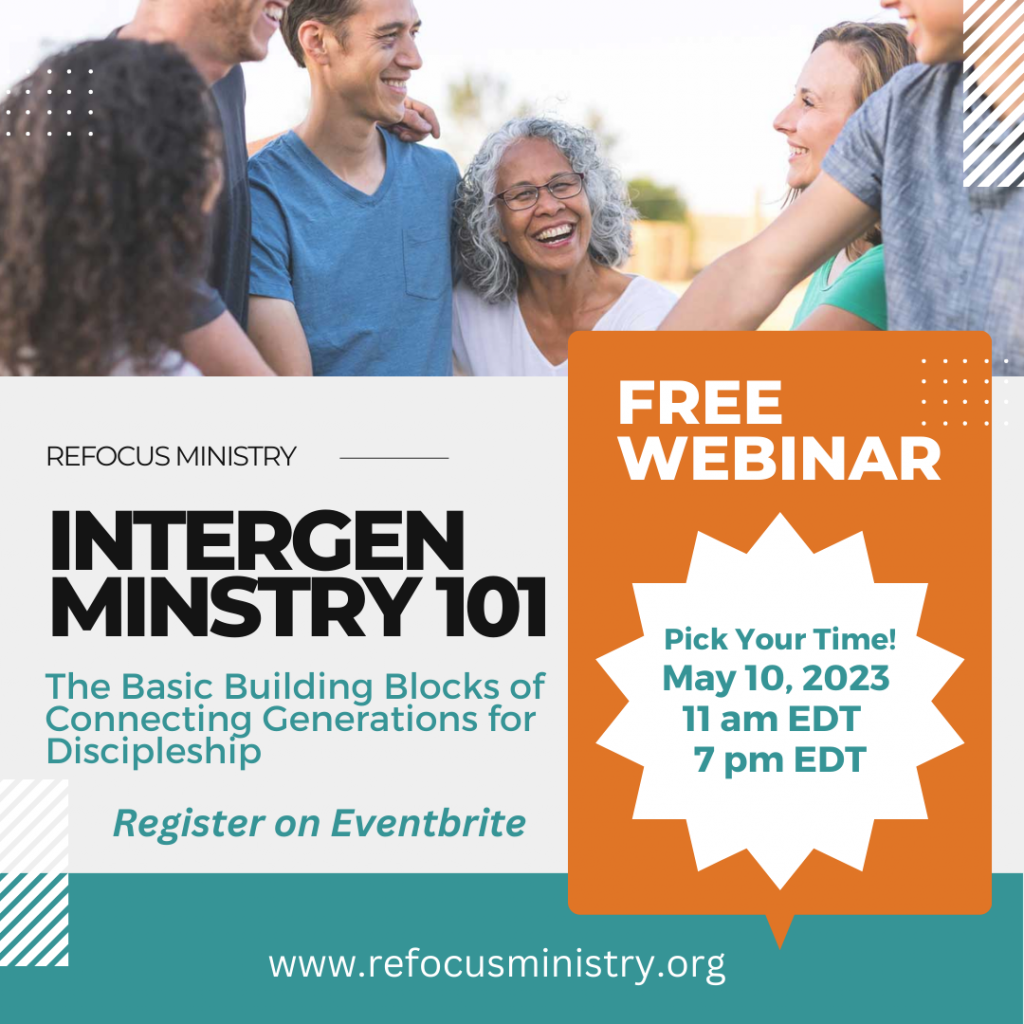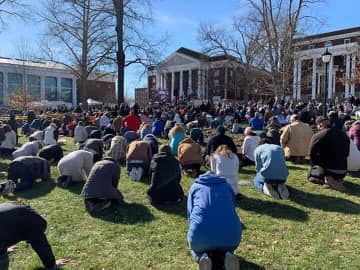
I love learning new recipes and a popular one that I’ve seen a lot recently is for birria tacos. They are scrumptious shredded beef tacos that are wrapped in a corn tortilla that has been dipped in a steaming savory sauce before consuming. Trust me, it’s… ah-maz-ing.
But if you look at the recipe, you’ll notice that the recipe starts with adding a bunch of peppers and onions and spices to broth, cooking on the stove, and then dumping that soup into a blender and making it a sauce. While the soup is flavorful, I’m sure, it’s the blending of all of the pieces together that makes it the essential sauce needed for Birria tacos. And that brings us to the question of the day:
“What is the difference between multigenerational ministry and intergenerational ministry?”
In the context of ministry, people often use the terms “multigenerational” and “intergenerational” interchangeably, but they are actually quite different. The reason people can think that they are the same is because they use the same ingredients – people of different generations in the same space at the same time However, while multigenerational ministry focuses on bringing people of different generations together in the same space, intergenerational ministry goes beyond that and emphasizes building relationships that lead to discipleship across space and time.
To understand this even better in terms of the church, I want to introduce two other terms: Thick intergenerationality and thin intergenerationality.
- Thick intergenerationality refers to multiple layers of generational overlap in all the areas of church life from programming to worship spaces to service and mission areas.
- Thin intergenerationality churches who find it difficult to locate multiple areas of generational connectivity in their faith community.
These can be observed in a number of ways, but the big one that I ask churches to notice is how people interact when all ages and stages are placed in a space together. It might be a worship service or a meal in the fellowship hall or even just interacting in the lobby.

Upon observation, do people of all ages tend to intermingle or do people of similar age and stage of life seek each other out and stand in groups or sit at table together? Do people of different generations know one another’s names or do people know the names of those in their age-specific groups?
Another interesting way to think about the difference between multigenerational and intergenerational is observing how people interact with each other.
When kids are young and play together, they typically do what’s called “side-by-side” play which means each child is playing with their own toy but they do it beside another child. But as they grow, they will move into cooperative play where they both play with the same toy or game with one another. And over time, they will begin to accumulate more people to join their game until they engage with group play where a group of children all join together in one large experience.
Let’s take that principle and apply it to the church sanctuary. Let’s imagine a space where all generations are present but everyone is sitting next to each other and not interacting with each other except maybe during the passing of the peace (side-by-side play). That likely isn’t too hard for us to imagine because that’s probably what most of us have experienced. Now imagine a scenario where all ages are intermingled, speaking with each other, older members helping younger members to participate, all ages represented on stage, serving as ushers, working the sound booth, etc. (cooperative or group play).
Recognizing the difference between multigenerational and intergenerational ministry is important for churches seeking to create intentional community.
If a church is clear about which type of ministry they want to create and embrace in a specific context, they can address concerns and make better “sauce or soup” accordingly. The move from multigenerational to intergenerational ministry often just requires a recognition of the need for intentional blending to take place.
INTERGEN MINISTRY 101
Join ReFocus Ministry for a free webinar that will give you the basic building blocks of intergenerational ministry as well as offer practical next steps and resources to identifying and connecting the generations present in your church today. SIGN UP on Eventbrite for the time that works best for you!
- 11 am EDT – https://www.eventbrite.com/e/619181698127
- 7 pm EDT – https://www.eventbrite.com/e/619218748947
Can’t make those times?
If you would like to know more about intergenerational ministry, the Connect Generations Ministry Assessment Tool, Family Faith Formation, or any of the other resources offered by ReFocus, sign up for your FREE 30 minute coaching session today.
ABOUT THE AUTHOR

Christina Embree is the founder and director of ReFocus Ministry. She holds a masters in ministry focused on Children, Youth, and Family Ministry and is completing her doctoral degree in spiritual formation with a focus on age segregation and intergenerational ministry. In addition to coaching churches of multiple denominations and traditions all around the globe, Christina serves as the Minister of Generational Discipleship for the Great Lakes Conference of the Brethren in Christ and as a pastor at Plowshares Brethren in Christ in Lexington, Kentucky. She is widely recognized as a speaker and author in the areas of generational discipleship, intergenerational ministry, and family ministry. As the mother of three children, she is familiar with the challenges of faith at home and pastoral ministry. She along with her husband Luke share a love for the church, their community, and the global work of peace and restoration through Jesus.



